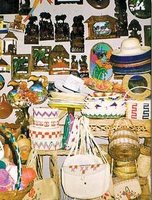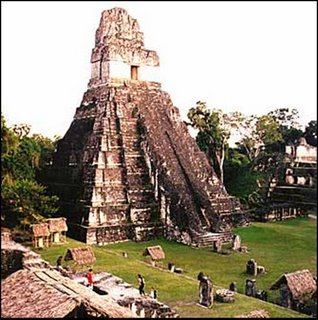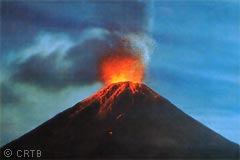 This time I would like to share with you a beautiful tour you could make if you ever travel Tegucigalpa in Honduras. Tegucigalpa, the capital city in Honduras, is located inside the mountains, it is about 3000 feet above sea level. It is surrounded by several mountains. If you are into the city and take a look kind of north-east, you will see some majestic mountains in the horizon, not very far away. This majestic landscape is part of La Tigra National Park, which we will talk about in future posts, it's an interesting adventure by itself.
This time I would like to share with you a beautiful tour you could make if you ever travel Tegucigalpa in Honduras. Tegucigalpa, the capital city in Honduras, is located inside the mountains, it is about 3000 feet above sea level. It is surrounded by several mountains. If you are into the city and take a look kind of north-east, you will see some majestic mountains in the horizon, not very far away. This majestic landscape is part of La Tigra National Park, which we will talk about in future posts, it's an interesting adventure by itself.There are several beautiful towns going into those mountains. One of them is Valle de Angeles, not very far away from Tegucigalpa, about 30 minutes driving by car, the road is in good condition. And you know what?..........the whole 30 minutes in that road you can enjoy the most beautiful landscapes you can imagine, it's a travel into the mountains. You can see the green vegetation and nature in all it's magnitude. The mountains are filled up with pine trees, there are like thousands and thousands of pine trees, it's incredible.
This trip is like escaping from the city world, it's another world really. You can breathe fresh air, you can smell nature!
 When you get to Valle de Angeles you will find out that this is a beautiful town with colonial buildings, churches, cobbled streets. And you have to take this opportunity to take a lookt at the most beautiful handicrafts you can imagine. Valle de Angeles is the uppermost Honduran handicraft showcase, another colonial and republican mining town, transformed in the past 40 years because of its cool climate into an ideal spot for artisans to showcase their many products, manufactured using many local materials. Mahogany carvings are one of the most appreciated crafts along with the Lenca pottery. There is no better opportunity for you to buy your souvenirs than here!. Within the town, there is an arts and crafts display area, consisting of several large halls. Here, you can see a vast selection of Honduran made handicrafts, many of which are made right here in Valle de Angeles. All of these items are for sale, and with luck, you might even meet some of the artisans that have produced them.
When you get to Valle de Angeles you will find out that this is a beautiful town with colonial buildings, churches, cobbled streets. And you have to take this opportunity to take a lookt at the most beautiful handicrafts you can imagine. Valle de Angeles is the uppermost Honduran handicraft showcase, another colonial and republican mining town, transformed in the past 40 years because of its cool climate into an ideal spot for artisans to showcase their many products, manufactured using many local materials. Mahogany carvings are one of the most appreciated crafts along with the Lenca pottery. There is no better opportunity for you to buy your souvenirs than here!. Within the town, there is an arts and crafts display area, consisting of several large halls. Here, you can see a vast selection of Honduran made handicrafts, many of which are made right here in Valle de Angeles. All of these items are for sale, and with luck, you might even meet some of the artisans that have produced them.Valle de Angeles is a picturesque town that has become a favourite weekend escape for the inhabitants of Tegucigalpa. If you go there on Sunday, you will be travelling along with thousands of people that are escaping to the mountains in this quick trip. Its proximity, only 30 km. and the good highway connecting it to the capital has made it popular with foreigners, many of who have established in the area. During the week, Valle de Angeles is a quiet place with few visitors, however it is teeming with action during the weekends. The Instituto Hondureño de Turismo manages a park nearby that offers sites for picnics. The Park is set amongst the pine-clad mountainsides and offers a great alternative for a quiet outdoor adventure during the week. It is closed on Mondays and heavily visited on weekends.
There are several other towns nearby, they are an adventure apart. I will share with you about these other beautiful towns in future posts.






